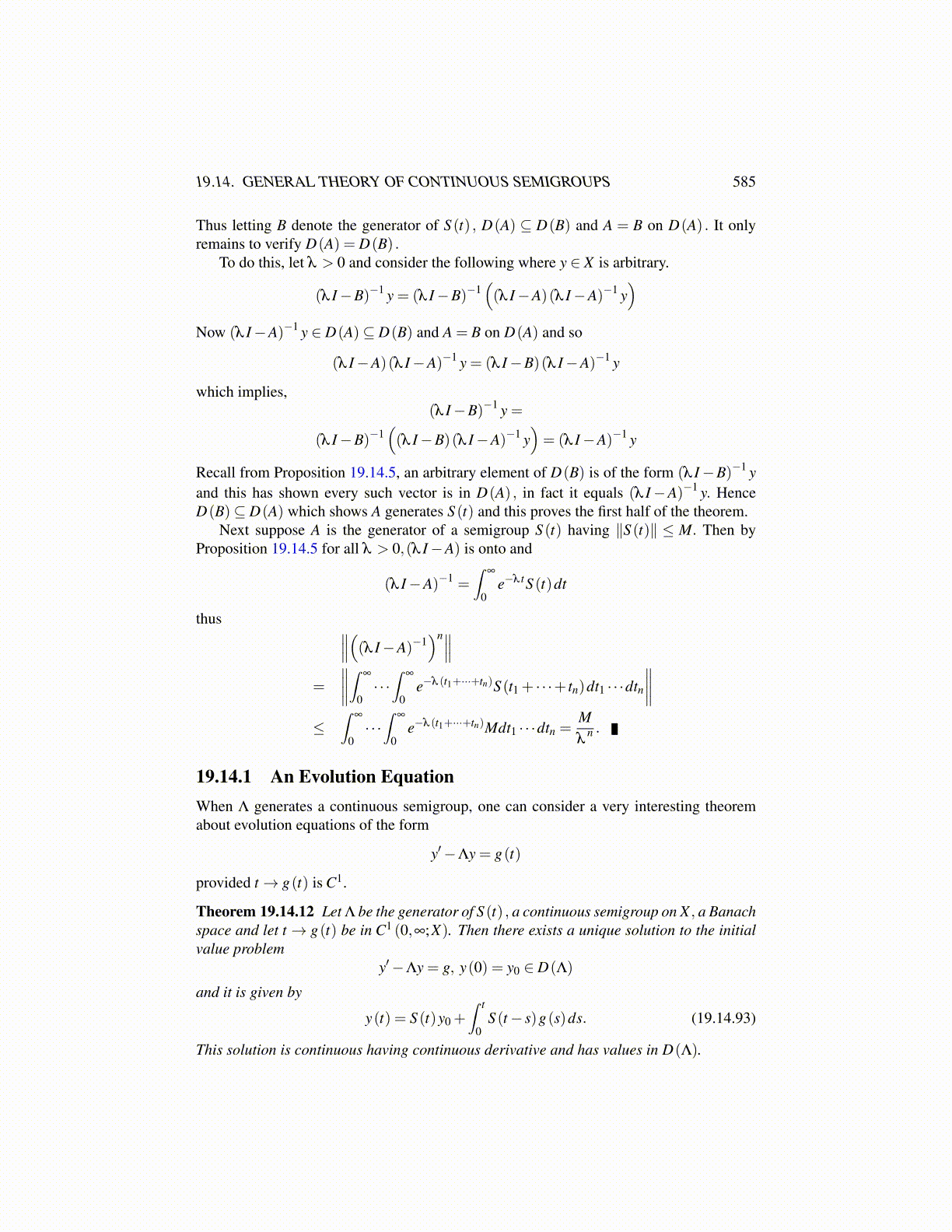
19.14. GENERAL THEORY OF CONTINUOUS SEMIGROUPS 585
Thus letting B denote the generator of S (t) , D(A) ⊆ D(B) and A = B on D(A) . It onlyremains to verify D(A) = D(B) .
To do this, let λ > 0 and consider the following where y ∈ X is arbitrary.
(λ I−B)−1 y = (λ I−B)−1((λ I−A)(λ I−A)−1 y
)Now (λ I−A)−1 y ∈ D(A)⊆ D(B) and A = B on D(A) and so
(λ I−A)(λ I−A)−1 y = (λ I−B)(λ I−A)−1 y
which implies,(λ I−B)−1 y =
(λ I−B)−1((λ I−B)(λ I−A)−1 y
)= (λ I−A)−1 y
Recall from Proposition 19.14.5, an arbitrary element of D(B) is of the form (λ I−B)−1 yand this has shown every such vector is in D(A) , in fact it equals (λ I−A)−1 y. HenceD(B)⊆ D(A) which shows A generates S (t) and this proves the first half of the theorem.
Next suppose A is the generator of a semigroup S (t) having ∥S (t)∥ ≤ M. Then byProposition 19.14.5 for all λ > 0,(λ I−A) is onto and
(λ I−A)−1 =∫
∞
0e−λ tS (t)dt
thus ∥∥∥((λ I−A)−1)n∥∥∥
=
∥∥∥∥∫ ∞
0· · ·∫
∞
0e−λ (t1+···+tn)S (t1 + · · ·+ tn)dt1 · · ·dtn
∥∥∥∥≤
∫∞
0· · ·∫
∞
0e−λ (t1+···+tn)Mdt1 · · ·dtn =
Mλ
n .
19.14.1 An Evolution EquationWhen Λ generates a continuous semigroup, one can consider a very interesting theoremabout evolution equations of the form
y′−Λy = g(t)
provided t→ g(t) is C1.
Theorem 19.14.12 Let Λ be the generator of S (t) , a continuous semigroup on X , a Banachspace and let t → g(t) be in C1 (0,∞;X). Then there exists a unique solution to the initialvalue problem
y′−Λy = g, y(0) = y0 ∈ D(Λ)
and it is given by
y(t) = S (t)y0 +∫ t
0S (t− s)g(s)ds. (19.14.93)
This solution is continuous having continuous derivative and has values in D(Λ).